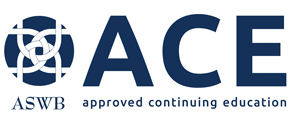Addictions Certificate Program | Track 2: Addictions Treatment Processes & Clinical Interventions
Summary
Successful treatment of addictive disorders typically includes various elements and processes that the effective practitioner needs to not only know about, but also to know how best to invoke those treatment elements in a manner that will be the best fit for each individual service recipient. Additionally, there are time-tested, evidence-based therapies with proven positive outcomes that practitioners would benefit from knowing about, either for direct provision or for the purposes of informing referrals. This set of sessions will focus on these learning targets, as well as equipping participants with the professional ethics knowledge and perspectives necessary for working with substance-involved populations.
- Describe the six dimensions of the American Society of Addiction Medicine's Patient Placement Criteria (ASAM PPC-2R), and how they inform level-of-care determination and referral.
- Describe how screening is critically related to assessment and treatment planning.
- Identify five brief screening instruments and describe how they may be effectively utilized.
- Describe the importance of providing a menu of treatment options during initial orientation to services.
- Describe how orientation and education are in themselves important interventions impacting subsequent treatment.
- Describe a comprehensive source of quality, low-cost, substance-specific educational materials and how to access them.
- Describe the 4 diagnostic criteria elements for Substance Abuse and the 7 criteria elements for Substance Dependence from the DSM-IV, and the changes to Substance Use Disorder diagnostic criteria in the DSM-5.
- Describe how assessment is critically related to treatment planning.
- Demonstrate how to conduct effective, recovery-oriented, strengths-based, stage-matched treatment planning.
- Identify the 6 stages of the Transtheoretical Model of Change align with the 8 stages of the Substance Abuse Treatment Scale (SATS), and describe how each are important, useful frameworks.
- Describe how to adjust stage-matched treatment planning as recovery occurs.
- Demonstrate how to write useful stage-matched progress notes.
- Describe how family systems theory informs the understanding of addiction as a "family disease" and associated treatment strategies.
- Identify the 3 concepts of enabling, codependence, and the Drama Triangle, and describe how to present these concepts to clients and "family" members, including family-of-origin, family-of-procreation, and family-of-choice.
- Identify available recovery support resources for family members, how to access them, and why they are important.
- Describe the differences between "social," "subacute," and "medical" detox, and when each of these 3 is indicated.
- Describe the pros and cons of the strategies of pharmacologically assisted detox vs cold turkey.
- Identify 5 psychosocial strategies used to support clients through withdrawal from different substance.
- Describe the efficacy findings of Motivational Enhancement Therapy from the Project MATCH research study.
- Identify 5 distinctive elements of Motivational Enhancement Therapy compared with other intervention models.
- Describe scripted session guidelines for delivering the Motivational Enhancement Therapy intervention.
- Describe the efficacy findings of Twelve-Step Facilitation therapy from the Project MATCH research study.
- Identify 5 distinctive elements of Twelve-Step Facilitation therapy compared with other intervention models.
- Describe scripted session guidelines for delivering the Twelve-Step Facilitation therapy intervention.
- Describe how the concepts of operant conditioning, and positive and negative reinforcement impact behaviors in the direction of addiction or recovery.
- Identify the 5 steps for designing an effective Contingency Management program.
- Describe what research findings indicate about the effective use of Contingency Management in addiction treatment.
- Describe the difference between empowering and enabling and why it is important in treating addictive disorders.
- Identify 5 strategies in empowerment and advocacy for and with clients with substance use disorders.
- Describe the importance of case management services being aligned with overall treatment goals and efforts.
Self-Paced Agenda
| Expected Duration | Description |
|---|---|
| self-paced | Screening and Referral |
| self-paced | Treatment Orientation & Psychoeducation |
| self-paced | Multiaxial Assessment, Case Presentation and Treatment Planning |
| self-paced | Stages of Change and Treatment: Measuring and Documenting Progress |
| self-paced | Family Systems and Natural Supports |
| self-paced | Detoxification Approaches and Strategies |
| self-paced | Motivational Enhancement Therapy (MET) |
| self-paced | Twelve-Step Facilitation Therapy (TSF) |
| self-paced | Contingency Management |
| self-paced | Empowerment Case Management |
Instructors
hybrid certificate program
CE Contact Hours
- 28.5 regular asynchronous online
- 1.5 regular live interactive online
Location
online
 Stephen R. Wiland
Stephen R. Wiland Lori A. Ryland
Lori A. Ryland